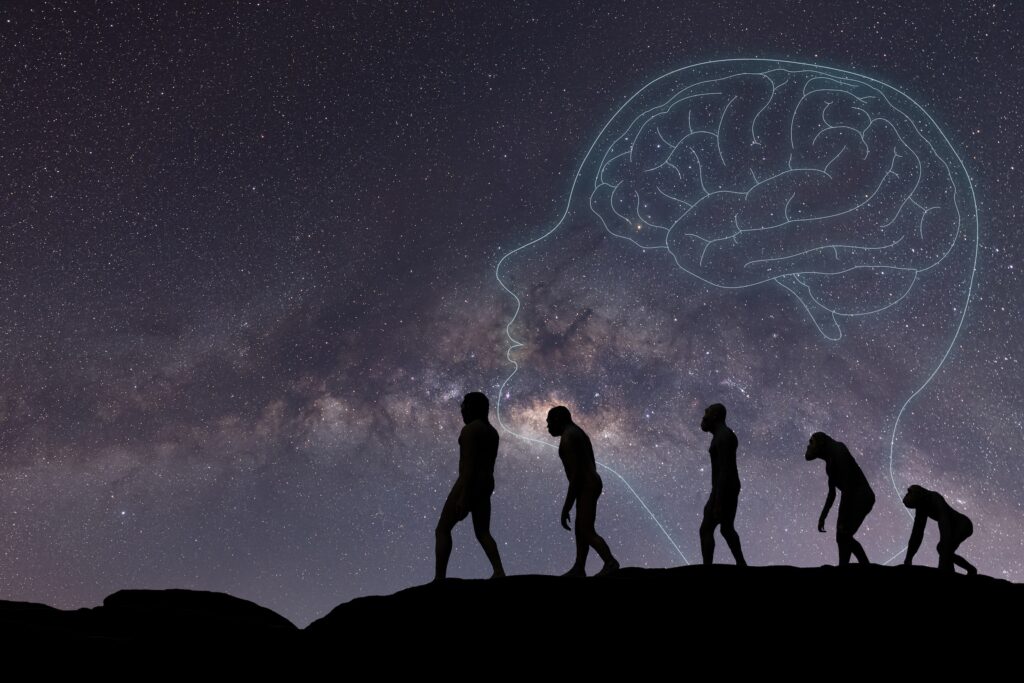The fallacy of scientific realism: does anything go?
Reading | Epistemology
![]() Robert Hamilton, B.Sc. | 2024-08-18
Robert Hamilton, B.Sc. | 2024-08-18

If all of our scientific theories are but convenient fictions—in the sense that nature behaves as if these fictions were true—but say nothing about the actual structure of reality, are we free to decide which way to think about this structure suits us best? Rob Hamilton addresses this and related questions in this short essay.
Introduction
Does God exist? What is consciousness? How can we know what is real?
Questions such as these have always perplexed humanity and, despite the great advances made over recent centuries in understanding the behavior of the world around us, we seem to be no closer to answering these core questions about the nature of existence.
In my new book Anything Goes: A Philosophical Approach to Answering the God Question,1 I argue that, paradoxically, answers to these questions can only be obtained once we recognize that no knowledge of the true structure of reality is possible. This implies that claims about the structure of reality can only be credible when viewed as models that describe the way our experience of the world behaves. These models then become our de facto reality.
The world is a model
Perhaps the popular notion of how science progresses is that we are gradually getting closer to the truth about the nature of the world around us. As time has gone on, scientific advances have been made and we have reached the stage where Einstein’s General Relativity and the Standard Model of particle physics give us a nearly complete description of the universe. We just need some clever physicists to iron out a few wrinkles like dark matter and dark energy in a Theory of Everything, and then we will have arrived at the Truth of how reality is structured.
The naivety in this belief was highlighted by 20th century philosopher of science Karl Popper, when he pointed out that scientific theories can never be proven to be true. Rather, they are working assumptions about the way the world is, which are supported by the evidence—until they aren’t. Newton’s theory of gravity was thought to be true until anomalies, such as the precession of the perihelion of the planet Mercury, were discovered. Instead, it is Einstein’s theory that provides the correct answer. This raises the possibility that, if we manage to come up with a Theory of Everything, who is to say that one day we will not conduct an experiment or make an observation that contradicts this theory? For this reason, even if physicists were to discover the true structure of reality, they could never know it. “Okay”, one might say, “although we would never know that we had reached the truth, at least we can say that our current theories are ‘more true’ than the previous ones.” This view is known as Convergent Realism and was attacked in a 1981 paper by the philosopher Larry Laudan.2 Although Einstein’s theory provides only very slightly different results to Newton’s at the everyday level, the way it characterizes the universe is completely different. Newton’s theory is set in the common-sense world of three-dimensional space and a separate conception of time. Einstein’s theory is based on the notion of curved four-dimensional spacetime. Who can say what the universe will look like according to the next theory? Quantum mechanics raises the possibility that cats, in a sense, can be alive and dead at the same time and that the building blocks of our universe can be both waves and particles. Might it be that the true nature of the universe is just as weird and perhaps even beyond our ability to comprehend?
Ultimately, scientific theories are models of the way the universe works. Scientists, such as the renowned physicist Richard Feynman, readily point out that scientific models do not give us the ‘why,’ only the ‘what.’2 They allow us to understand the universe in terms of its behavior—we can use them to predict how the macroscopic objects of our experience, such as tables, stars and light bulbs, behave. They do this by characterizing the universe in a way that helps us get to grips with it. But, as humans, we just do not have the tools to find out what the universe is ‘really like.’
The map is the territory
Now comes the plot twist. The surprising but unavoidable consequence of this is that the structure or make-up of this reality that we are modelling is, in a sense, irrelevant. If its structure is unknowable, then reality can only affect us through its behavior. And so it is only reality’s behavior that matters. It is reality’s behavior that we are modelling and a good model will predict its behavior well. But if reality’s structure is fundamentally elusive, then it will forever remain a shadowy mysterious thing lying behind the veil. It is only the structure and objects of our models that can be known to us. These are the things that we live by and that give our lives meaning. And so these are the only objects that can be considered ‘real’ in any meaningful sense—if the objects of our models are not real, then nothing is real.
What we have here, I would argue, is a case akin to The Emperor’s New Clothes. Many scientists and physicists are aware that all of our understanding is in terms of our models, but perhaps avoid engaging with the implications of this, because it is unnecessary for day-to-day work and raises difficult questions. We cling to the idea that there must be a ‘right answer’ out there, because if there isn’t, then, well, doesn’t everything fall apart? Where are the standards of correctness? What is to stop us from just claiming that whatever we like is true? I argue in Part III of my book that these worries are unfounded. Although its structure is unknowable, reality does behave in a certain way. And so not all models are created equal.
Anything goes?
I like to call this way of thinking the ‘Anything Goes’ method, because with no knowable reality to assess our models against, the only standard of correctness is a consideration of whether your model produces sensible results. And there is more to modelling reality than the laws of physics. Even the idea that there is some kind of external reality that is the source of our experiences is part of a model that gives us an explanation for why our experiences behave in the way they do [Editor’s note: some physicists are now questioning even the assumption of a shared external reality]. Ultimately, each of us needs to find a way of making sense of our experiences in a manner that works for us. In that sense, anything goes [Editor’s note: Essentia Foundation does not endorse this conclusion].
Applications
I suggest that this way of thinking is revolutionary. Once we recognize that it’s all a matter of perspective—that there are no disembodied facts about the universe in any useful sense—we can make progress in all sorts of areas that have previously proved intractable. Does God exist? It depends on your model. Is Schrödinger’s Cat alive or dead? Well, from whose perspective? Schrödinger’s or the cat’s? How would we tell if an AI attained consciousness? To answer this question, we need to consider what it means to say that an entity that only exists as part of your model of reality might have a mind of its own. We may go on to consider whether Solipsism could be true, what it’s like to be a bat, and whether you could be a brain in a vat. All these questions and more are addressed in my book.
Notes
1 See www.anythinggoesmetaphysics.com for further discussion on these issues.
2 The original paper, ‘A Confutation of Convergent Realism’ (Larry Laudan, March 1981, Philosophy of Science Vol. 48, No. 1), Harding and Rosenberg’s reply ‘In Defense of Convergent Realism’ (Clyde L. Hardin and Alexander Rosenberg, December 1982, Philosophy of Science Vol. 49, No. 4) and Laudan’s response ‘Realism with the Real’ (Larry Laudan, March 1984, Philosophy of Science Vol. 51, No. 1) can all be found online.
3 The inimitable Richard Feynman talks about how hard it is to make sense of what physics tells us about world at around the 21-minute mark in this video: http://vega.org.uk/video/programme/45.

Essentia Foundation communicates, in an accessible but rigorous manner, the latest results in science and philosophy that point to the mental nature of reality. We are committed to strict, academic-level curation of the material we publish.
Recently published
Reading
Essays
Seeing
Videos
Let us build the future of our culture together
Essentia Foundation is a registered non-profit committed to making its content as accessible as possible. Therefore, we depend on contributions from people like you to continue to do our work. There are many ways to contribute.















